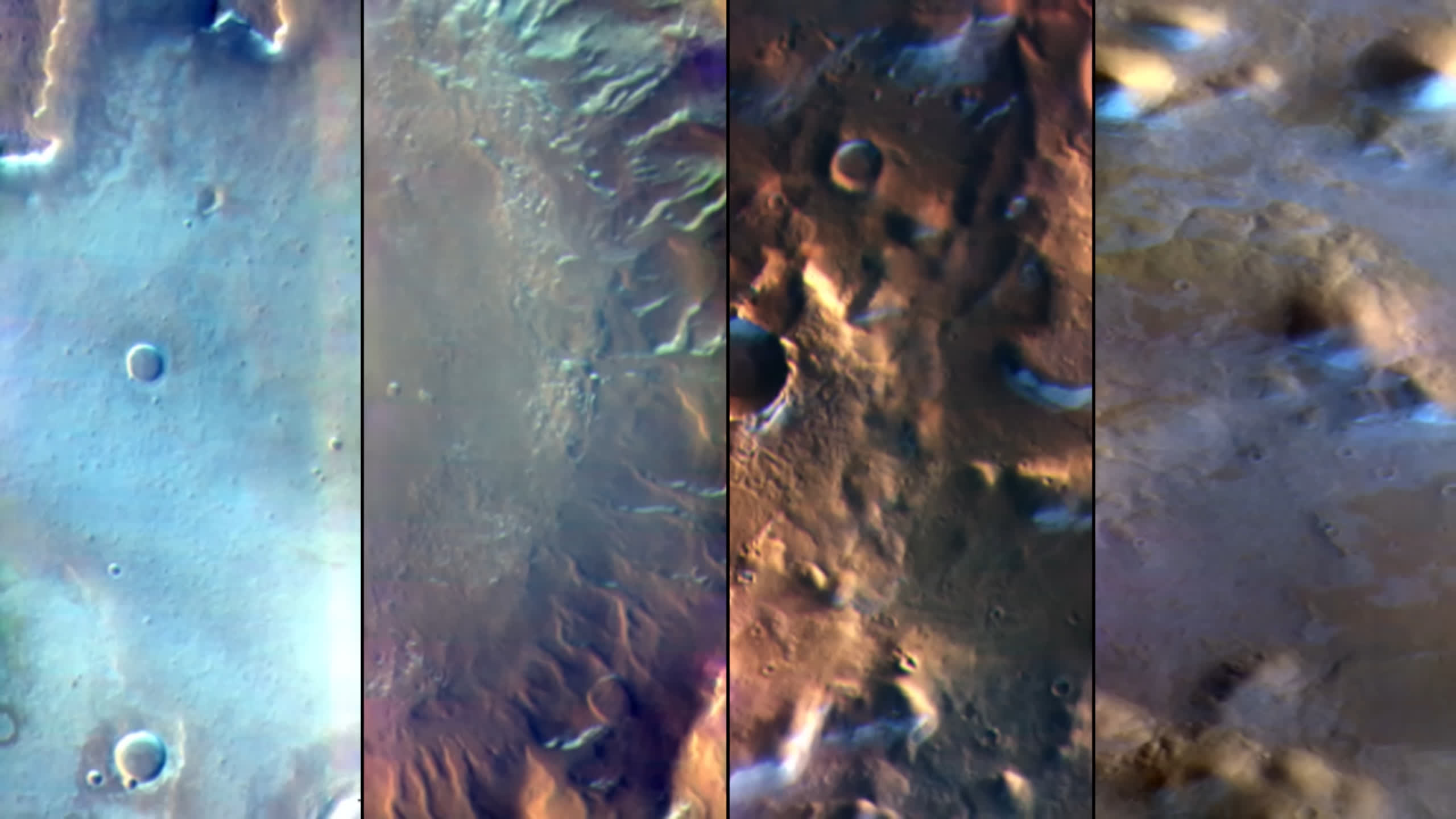Out of This World: NASA's Mars Odyssey orbiter was launched in 2001 and has just completed its 22nd year of close Martian observations. With the spacecraft still going strong, scientists here on Earth are finding even more ways to exploit its capabilities.

Mars Odyssey was recently employed to capture never-before-seen images of the Red Planet's atmosphere, providing scientists – and the public – with a stunning, new view of Mars' curving horizon. The spacecraft took the photos from an altitude of around 400 kilometers, which is the same altitude where the International Space Station (ISS) orbits our Pale Blue Dot.
NASA scientists used the infrared camera aboard Odyssey known as Thermal Emission Imaging System or THEMIS. The camera's sensitivity to warmth enables NASA to map ice, rock, sand, and dust formations, along with temperature changes, but it is usually limited to surface observations.
THEMIS is installed in a fixed position on the Orbiter, therefore it usually points straight down at Mars' surface. To get a new view of the Martian atmosphere, NASA engineers at the JPL had to work together with Lockheed Martin Space – the company that built Odyssey – to prepare a new plan for the spacecraft.
THEMIS can't pivot, NASA explains, therefore the entire Orbiter needed to adjust its position. The spacecraft was rotated almost 90 degrees, making sure that the Sun was still providing energy to its solar panels without damaging other sensitive equipment. Because of the planned rotation, the Orbiter briefly pointed its antenna away from Earth causing a communication blackout for several hours during the observation phase.
The panoramic images captured by Odyssey show Mars' curving surface, with the hazy layers of clouds and dust composing the planet's thin atmosphere extending in every direction. The new view is not only stunning for space enthusiasts, but it will also help NASA scientists gain new insights into Mars' atmosphere.
While Odyssey was tilted from its usual position related to Mars surface, the US space agency also took new images of Phobos. The minuscule Martian satellite, which measures just 26 km across, was captured under a different angle and lighting conditions which could provide new data about its composition and physical properties. Such data could help finally settle the debate over Phobos' origin, as the moon was either captured by Mars gravity or ejected from the surface following a huge planetary impact.
https://www.techspot.com/news/101026-nasa-mars-orbiter-captures-new-views-red-planet.html